What are the Blue Sea Jelly-Things Washing up On California’s Beaches?

If you’ve visited SoCal beaches in the last few days, you will have probably seen thousands— if not tens of thousands— blue sea jelly-looking creatures with stiff, transparent sails stranded at the high water line.
These are by-the-wind sailors (Velella velella), not sea jellies, but small hydroids that occasionally wash up on our beaches. They are fascinating animals and when a mass stranding occurs, like is happening right now, you can see many of them alive on the shore. In this article, we’ll explore what they are and why they are on the beach.
What are they?
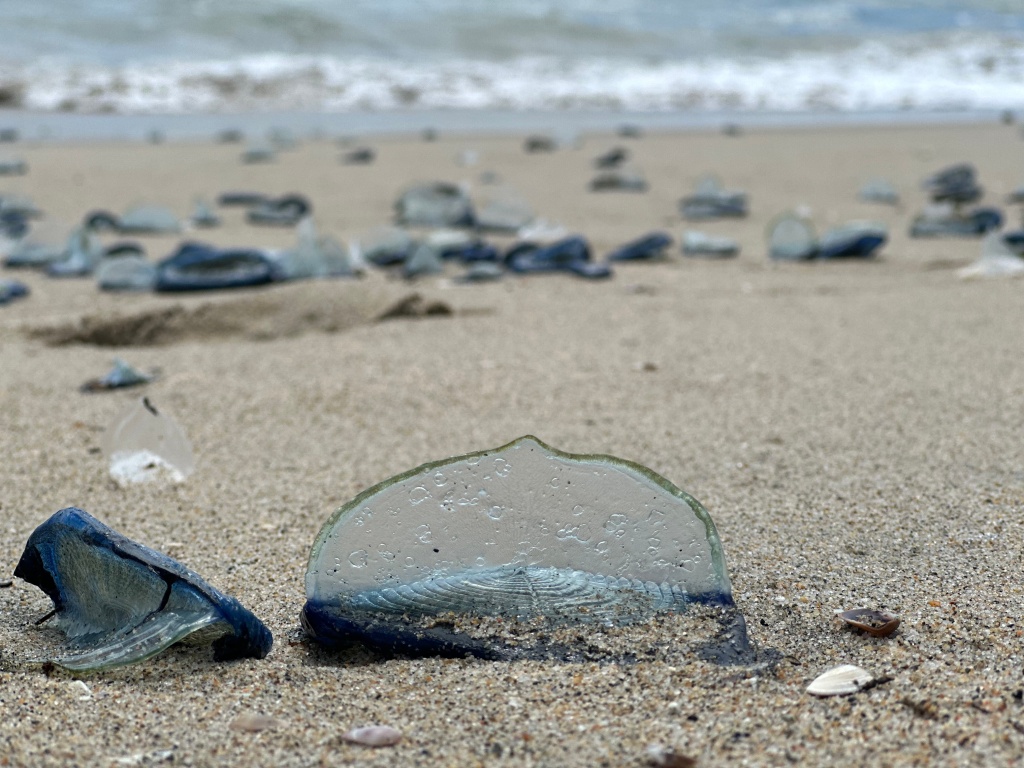
By-the-wind sailors, sometimes referred to by their scientific name, Velella velella or just velellas, are pelagic, colonial hydroids, native to warm/temperate waters in the Pacific. Ok, that’s a lot. Let’s unpack that.
Pelagic: Pronounced just like it looks, this word means that a marine animal lives in open water, often near the surface. It is the opposite of “benthic,” which refers to an animal that lives on the bottom of the ocean. Velellas live on the surface of the ocean (neuston) with their sails above the water to catch winds. They cannot swim against currents nor do not have any control of where the wind blows them. Adrift on the sea is home for these animals.
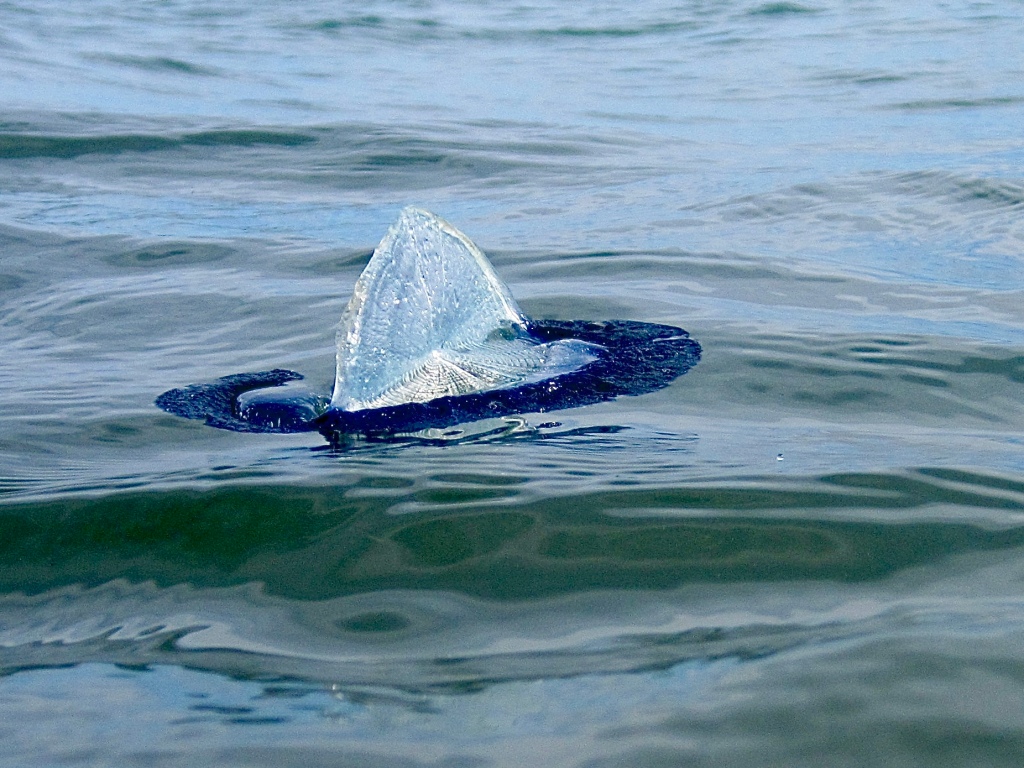
Hydroids: Hydroids here is the name of a group of animals, in this case, that all belong to the subclass Hydroidolina. They are related to sea jellies, corals, and anemones that all have stinging cells with which they catch prey or defend themselves. You can read more about hydroids in this article.
Colonial: Velellas are colonial hydroids with thousands of individual “zooids” living together in one “body.” These tiny individuals are not fully independent but are connected by a canal system that allows them all to share the food they catch. Like many cnidaria, velella are predatory and feed on plankton they encounter while drifting across the surface.
A note for the biology nerds among you: velella is an alternating-generations animal like most hydrozoans. This is the polyp generation (all the individual zooids in each colony are either male or female) which will asexually produce thousands of medusa over its lifetime. The medusa develop to sexual maturity within several weeks and reproduce sexually to create the next generation of polyps. To learn more about the alternation of generations, check out this article.
Why are they on the Beach?
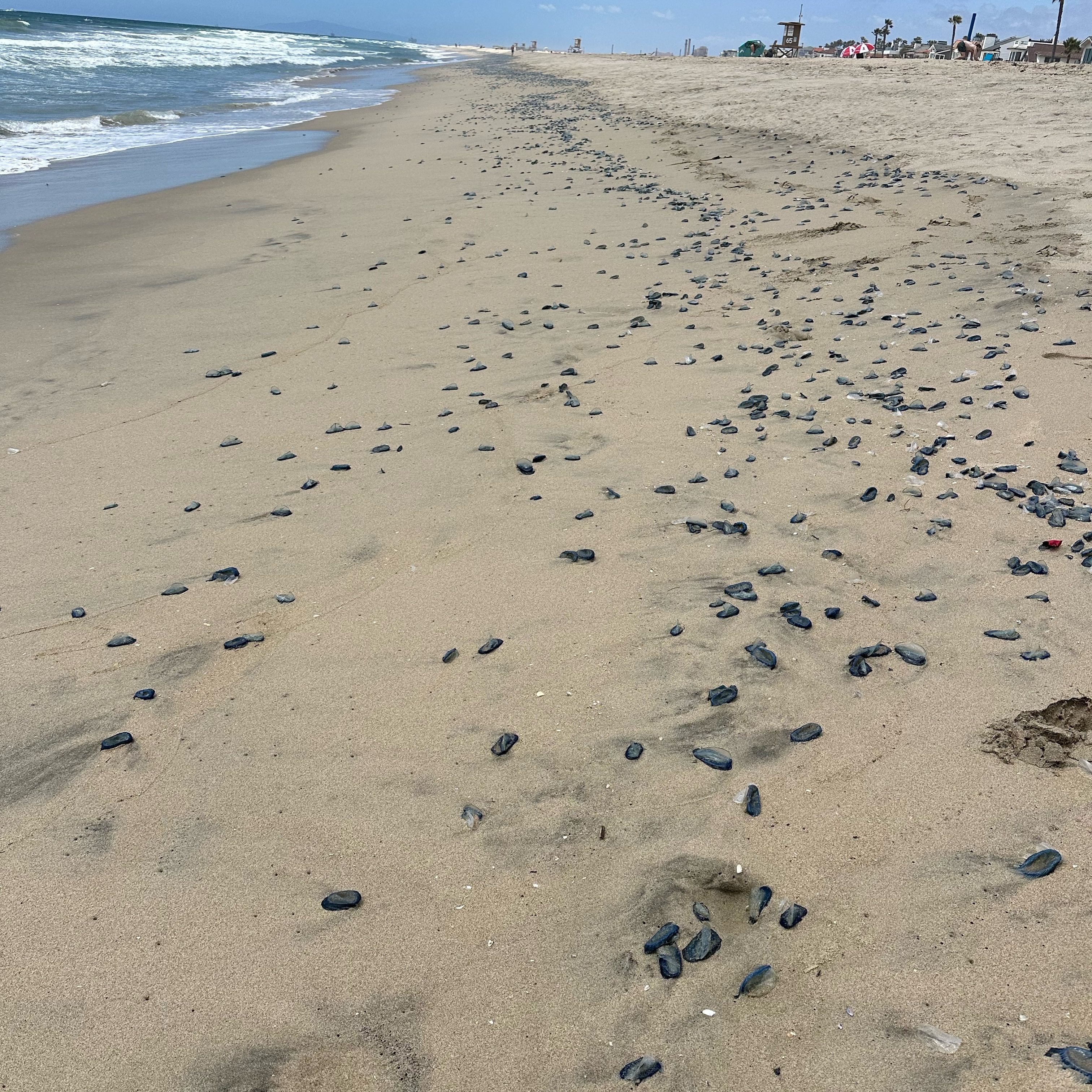
Mass strandings of velella and other hydroids like the infamous Portuguese man o’ war (Physalia physalis) occur frequently depending on season, climate, and other factors. Velella strandings usually occur on the California coast in the Spring, leading some to believe that warmer temperatures at the end of winter cause a bloom in population that are then pushed toward the beaches by the Spring onshore winds. Since these animals can’t swim against the current and are blown around when the wind catches their stiff sails, they are helpless to resist being stranded on the beach. You can read this scientific paper about theories about velella strandings.
Can I Touch Them?
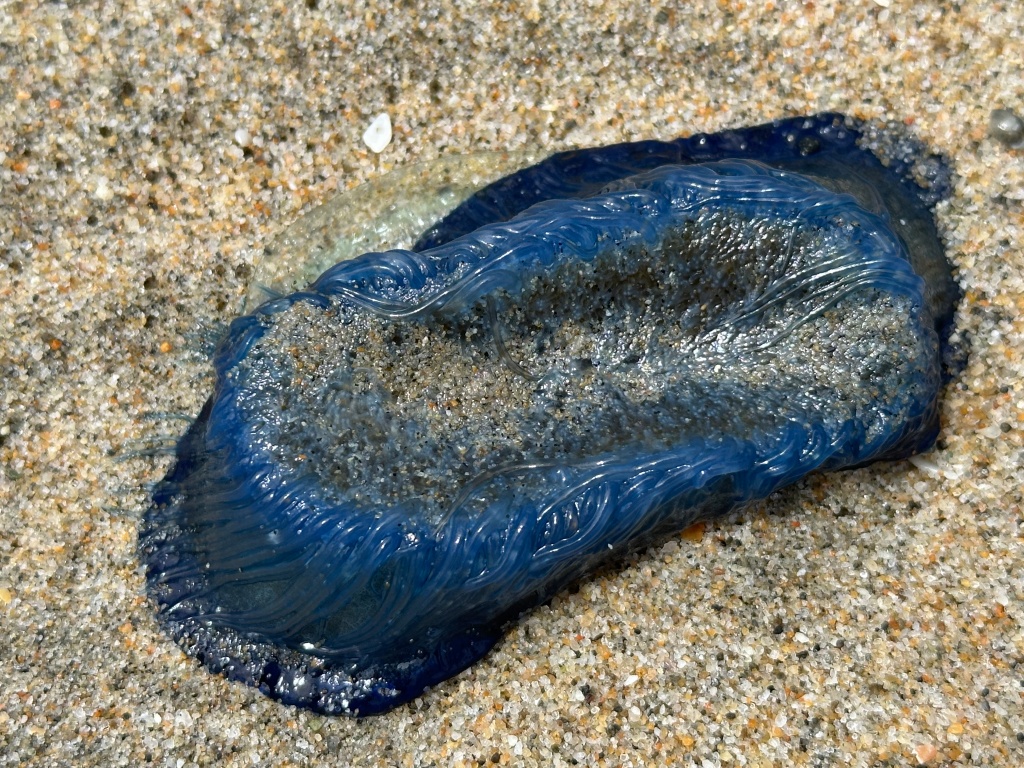
Velella are cnidarians, the group that includes sea jellies, corals, and anemones. All the animals in this group have stinging cells called nematocysts with which they sting and catch prey. But the stinging cells on velellas aren’t often potent enough to penetrate a human’s skin, so they are safe to touch and pick up if you want to. There are, however, many other jellies and hydroids that have stings strong enough to harm humans, so make sure it is a velella before you touch it. Also make sure to show respect to nature and not to play with them as they are living animals. Touch and hold them for curiosity and education.
Should I Put Them Back in the Water?
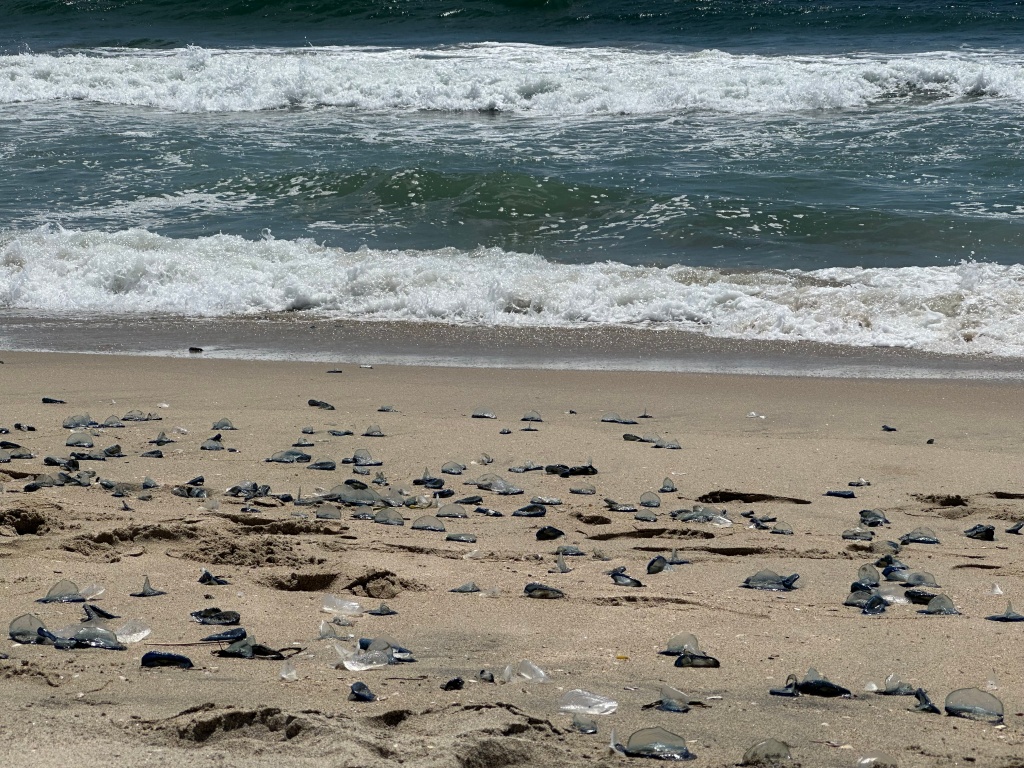
Since you can safely touch these animals, you can put them back in the water if you’d like to. Only the velella that are blue are still living; if you see one entirely transparent, it is already dead. However, putting these animals back in the waves is not likely to save them. Even if aren’t immediately washed back into shore by the waves, the winds that originally brought them toward the coast will likely return them back on the sand. That said, you might be able to save some by returning them to the sea.
If you haven’t been to the beach in the last week, head down and see these animals stranded in the intertidal zone!
Photos in this article courtesy of Candy Chapman
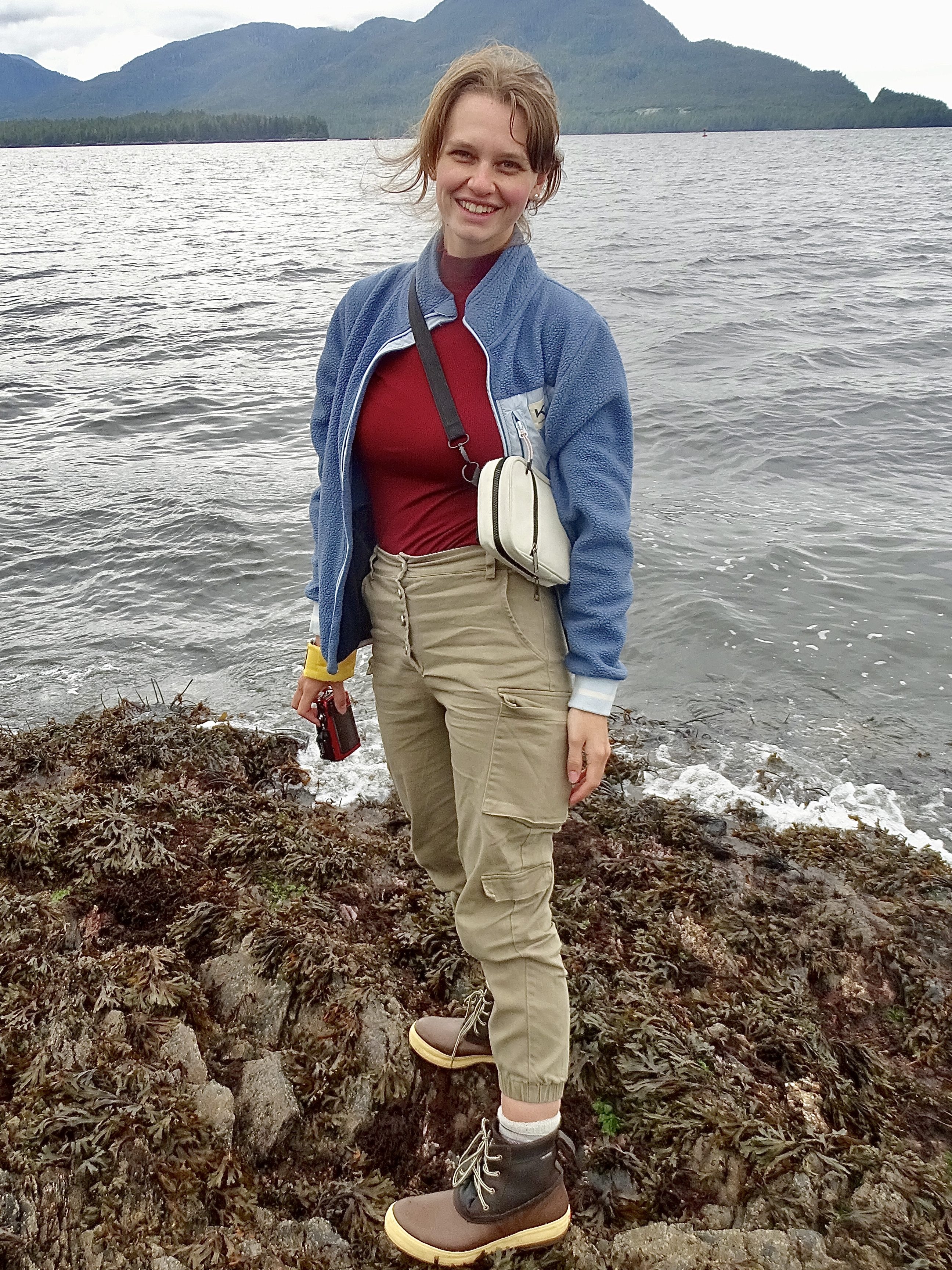
Categories
tags
Subscribe to the blog
Sign up to receive weekly emails with tide pooling information and guides so you never miss a post!

Leave a comment